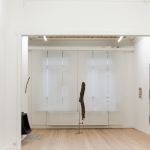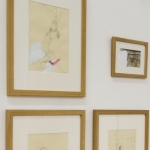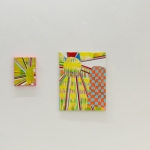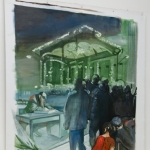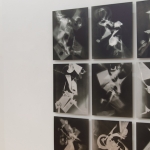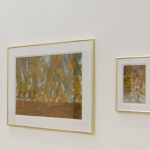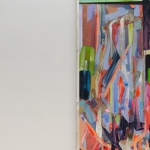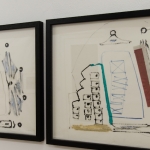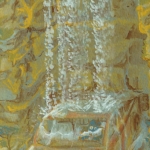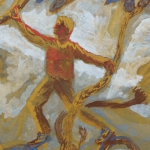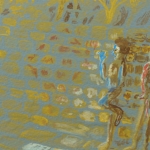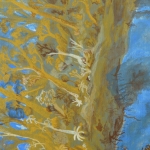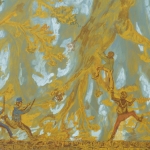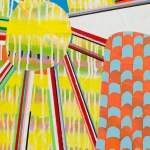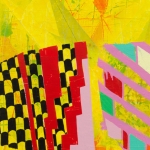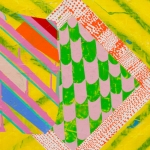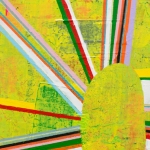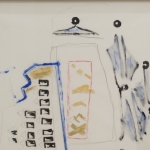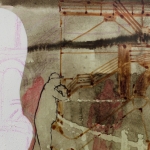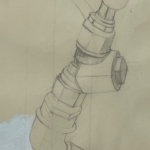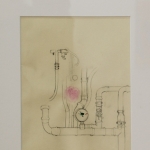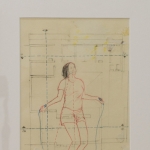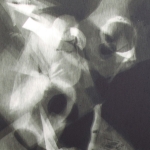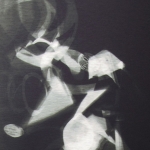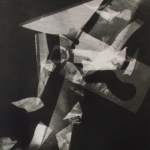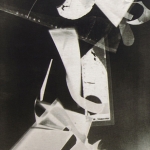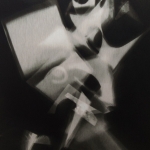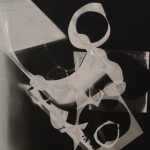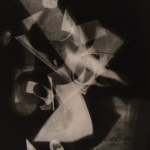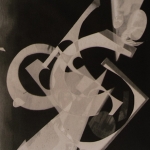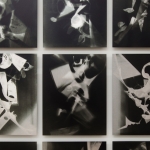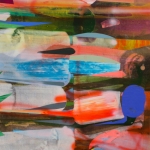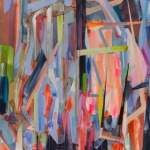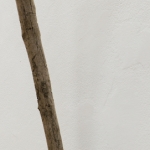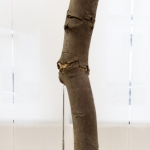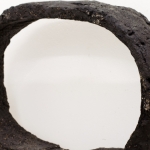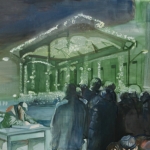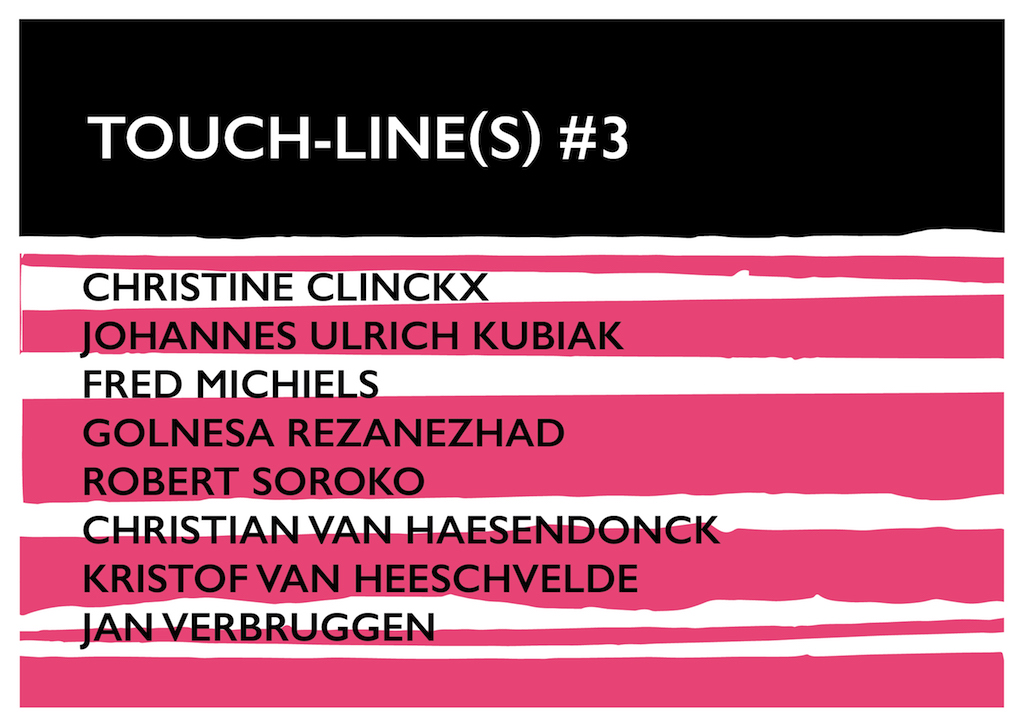
28 January - 26 February 2022
TOUCH-LINE(S) #3
A group show with the works by
CHRISTINE CLINCKX | JOHANNES ULRICH KUBIAK | FRED MICHIELS | GOLNESA REZANEZHAD | ROBERT SOROKO | CHRISTIAN VAN HAESENDONCK | KRISTOF VAN HEESCHVELDE |
For this third TOUCH-LINE(S) exhibition Eva Steynen selected works by six artists the gallery works with and two artists who are collaborating with the gallery for the first time.
A line makes a difference, bringing an order into a (figurative) space. A line defines what is inside and outside it's frontiers. But the line itself has no space, thus no inside and outside. What is left and what is right? What is above and what is down? Upon the line itself, they all meet; they all touch, each-other. The line being a frontier that is not absolute, that is porous and fragile, interacts with its surroundings. The line that is not linear, meanders, touching a possibility.
The artists in this exhibition each are familiar with the non linear, fragile and porous line as an interaction with its surroundings. Not always recognizable for the viewer, but always deliberate and unique for each artist.. Bringing together their works in the gallery space, creates new possibilities of perspective.
Installation Views
Works
CHRISTINE CLINCKX - °1969 (B), lives and works in Antwerp. Themes in her work are time and history and how people deal with it. Through de- and reconstructing fragments of personal and familial histories, she visualizes events hidden in our collective memory. In her installations, performances and photographic work real objects or persons Clinckx shows beyond all recognition with respect to people's choices in history. Clinckx confronts us with our process of memory and challenges our comfort zone.
For this exhibition Clinckx made a series of photograms during the first COVID lock-down on light-sensitive paper the final results are printed on metal.
JOHANNES ULRICH KUBIAK - °1961 Annaberg-Buchholz (D), lives and works in Antwerp. In his drive to explore other media in the research of depth and layers he explores the transparency of layers and the use of different supports. These aspects of transparency and process Kubiak leaves visible in his paintings. The basis are underlying structures he distillates out of his photographs he makes during his wanderings through cities. The figuration seems to disintegrate under the surface of the composition, leaving visible every brush stroke, one next to and over the other interfering and creating new constellations of color. While painting the works lie flat. This opens a space of possibility and omits the awareness of up and below. In an intense concentrated and slow process figurations emerge into variated structures of vibrant color.
FRED MICHIELS, - °1966 (B), lives and works in Sambreville - his lively colored works are vigorously painted with a flair of humor and self-reflexivity. In a continuous wondering how to make sense in art and painting, Oil on canvas is alternated with different kinds of paint and supports. When the world is grim and there are no other stories to tell, Michiels finds a playful way in a freedom of painting. One in which nothing is pre-determined, in which there are neither obligations nor prohibitions, in which nothing is foreseeable. Overpainting and -printing are part of the process. There is no such thing as an ugly color or combination. Michiels' vigorously and instinctively formal painted tropes are sincerely and full of pleasure.
GOLNESA REZANEZHAD - °1982 (IRN), lives and works in Ghent - is an artist and researcher. Her works methodologically are a combination of two approaches; one is focusing on her individual work in her studio and the other important part of her work focuses on collaborative work with people outside of her studio space. Her collaborative approach provides possibilities to other people to add their understandings, knowledge, and skills into the artistic conversation. She is interested in the notion of culture and womanhood. She searches how the roles of women (as the important segment of society in the production and reproduction of culture) have been transformed under different social, economic, and political transformations.
In the drawings in this exhibition, she uses pipes and constructions as references to modernization and as manifestations of power that regulate people's positionality in this world.
ROBERT SOROKO - °1990 B, lives and works in Antwerp - searches for possibilities to keep his sculptures mobile. By wind or by hand they move very subtile, almost invisible. Hard materials like metal he gives form, they show a captured movement, as if the welding has suddenly stopped. Although they are robust they show a purified simple line. We already saw his works combining soft bamboo with iron. During the Covid-19 lockdown he started to work on a series for outside. This new steel figures come in clear basic colours. Making a different intervention depending on the material an space. They recall to figures out of old cultures, their slow elegant movements inspired by Tai-Chi, organic figures that seem walking out of another world.
CHRISTIAN VAN HAESENDONCK – °1957 (B), lives and works in Antwerp – his work includes discontinued drawings, collages and meeting folders, to be adapted on the situation. Based on an art practice as side-activity during other occupations, Van Haesendonck is using a drawing technique of immediate notation as well as a shared language, common to everyone. Simultaneously he continues to remain so long as possible in the development-phase of creation, balancing on the edge of the cut between representation and abstraction. The two painted sketches, titled 'Concise maxims', shown in the exhibition, have been worked out on July, 16th, 2018, focusing on inscribed and circumscribed forms.
KRISTOF VAN HEESCHVELDE – 1979 (B), lives and works in Ghent – resolutely opts for painting in which he focuses on technical mastery on the one hand and social observations on the other. With multiple layers and an eye for texture and formal details, he creates a world that in terms of form and technique refers to the Old Masters and is a razor-sharp observation of our society. Van Heeschvelde's work focuses on the behavior of the homo sapiens, and the world he created for himself. Using a collage technique, Van Heeschvelde puts together various elements that at first sight have nothing to do with each other and that cannot or will not enter into a relationship with each other. At the same time, these composite realities form a razor-sharp observation of human being and action. He counteracts that critical eye by letting humor and a naive color palette creep into his work. Van Heeschvelde paints on large canvases (210 x 170) which he hangs freely in the room, not stretched. In this way the painting comes loose from its medium and the dimensions are extended beyond the frame of the canvas.
JAN VERBRUGGEN – 1980 (B), lives and works in Brussels - makes oil paintings and works on paper. Verbruggen is a story teller. He paints surrealist fragments from a fictive event. As a spectator we witness how the intimate atmospheres are literally intruded by floral landscapes. Verbruggen paints in a search for secrets passages in his body of work. Whereas his personages on the canvas find a way to escape to a different, hidden room that is hors-champ and often symbolic. With a lush and baroque colour pallet Verbruggen's sceneries turn estranged and reveal a certain 'unheimlich' feeling, always with a twist. These imaginary spaces create an in-between world that is transformative and offers an insight behind the surface of the visible; an 'embodied space', where the private and outside world literally immerse.

